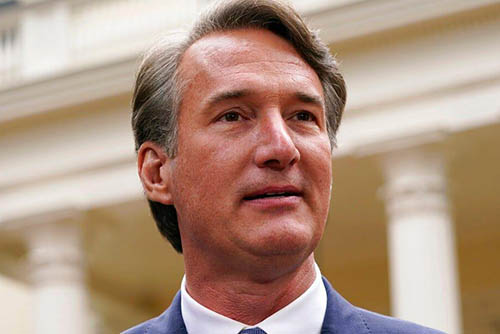Most Virginia Colleges Will Freeze Tuition
 At least 10 state colleges will flatten tuition costs for in-state undergraduates this fall, as many have responded to a request by Gov. Glenn Youngkin.
At least 10 state colleges will flatten tuition costs for in-state undergraduates this fall, as many have responded to a request by Gov. Glenn Youngkin.
While students and parents have been impacted by inflation, public schools in the state have found ways to tighten their belts, or they’ve received more funding than initially expected.
But the University of Virginia has declined the governor’s request, which caused Youngkin to feel “deeply disappointed,” he said this week in a telephone interview.
Virginia Commonwealth University, James Madison University, Virginia Military Institute, the University of Mary Washington, Longwood University and Old Dominion University have changed course and announced freezes in the past week, joining Virginia Tech, the College of William & Mary, Virginia State University and Norfolk State University, which planned no tuition increases from the beginning.
George Mason University hasn’t made a decision yet. It will wait until December to reconsider tuition costs for the remainder of the school year.
Three others either did not respond to requests for comment or could not immediately provide information Thursday: Radford University, Christopher Newport University and the University of Virginia’s College at Wise.
“Of course, all these universities went and did this work because they know it’s the right thing to do,” Youngkin said in an interview this week.
At UVA, it’s been more than six months since the university voted for a 4.7% increase in 2022 and a 3.7% increase in 2023. The school conducted an analysis of the current economic conditions and university needs and welcomed the public to comment before the vote was conducted, said school spokesperson Brian Coy.
Coy noted that UVA is one of only two public colleges in the country that meets the demonstrated financial need of all its undergraduate students through scholarships and loans.
“We are committed to access, affordability and excellence,” he added.
It would cost UVA $7.5 million to flatten tuition, Youngkin said, which he termed a small commitment for a school with a “giant budget” of almost $2 billion, an endowment valued last year at $14.5 billion and state funding that increased 18% from the previous biennium.
“I think that’s a really poor statement on their behalf,” he said.
Asked if there would be consequences for UVA’s actions, Youngkin declined to provide a specific response.
“This is actually a moment for goodwill to prevail,” as opposed to threats, he said.
A month ago, most of the state’s 15 public colleges planned to raise tuition, citing an average 5% increase to salaries, higher utility costs and increased expenses for maintenance.
The average cost of tuition and fees for public colleges in Virginia before scholarships and grants is roughly $13,000 annually. Room and board costs an additional $12,000.
Now, colleges have found a way to keep tuition flat. JMU, Mary Washington and VMI cited increased state funds as a reason they were able to freeze tuition costs.
Karol Kain Gray, VCU’s chief financial officer, noted that flat tuition would lead to an $11 million budget shortfall and the elimination of 62 jobs through attrition — but no layoffs. Forcing the school to continually freeze tuition will lead it down a path of mediocrity, she said.
“I don’t want anyone to think this won’t be difficult,” VCU rector Ben Dendy said last week.
Several schools have said they will raise fees and the cost of room and board next year.
Schools that have recently flattened tuition have followed Virginia Tech’s approach — raise the price on paper but offer a one-time scholarship to in-state undergraduates that covers the cost of the increase. Out-of-state students and graduate students will still pay the increase.
Though they have frozen tuition now, these schools are banking on an increase next year. Youngkin said he won’t worry about that until next year and that he understands inflation has hit colleges, too.
Virginia’s government funds its colleges less than other states, awarding $6,500 per student, roughly half the cost of education. Forty states provide a higher level of funding.
The state’s funding model, Youngkin said, “has resulted in great schools across the commonwealth.”








